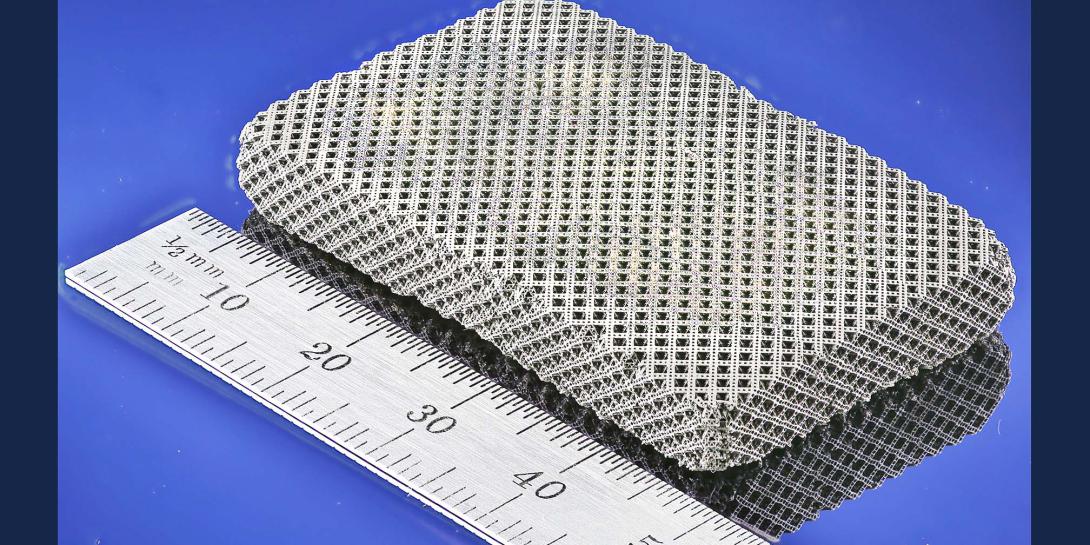Researchers Achieve Nanoscale Benefits at Microscale
Lawrence Livermore National Laboratory (LLNL) engineers have achieved unprecedented scalability in 3-D printed architectures of arbitrary geometry, opening the door to super-strong, ultra-lightweight and flexible metallic materials for aerospace, the military and the automotive industry, according to a published announcement.
In a study published online in Nature Materials on July 18, LLNL engineers report building multiple layers of fractal-like lattices with features ranging from the nanometer to centimeter scale, resulting in a nickel-plated metamaterial with a high elasticity not found in any previously built metal foams or lattices.
“With these 3-D features we’ve been fabricating on a nanoscale you can get some really interesting properties, but people have never been able to scale them up and see how they behave,” said lead author Xiaoyu “Rayne” Zheng, a former LLNL technical staff member who led the study and recently transferred to academia as a professor of mechanical engineering at Virginia Tech. “We’ve figured out a strategy of hierarchically building them to take advantage of the nanoscale features but use them at a large scale. It turned out better than we could have imagined.”
The concept could overcome the current limitations of 3-D printed micro and nano-architectures by addressing the usual tradeoff between high-resolution and build size, and extend to a variety of large-scale applications, including aircraft parts, batteries, or stretchable armor for the military.
“[Y]ou can achieve high strength at a very light weight, as well as a ductile-like behavior in materials that are normally brittle,” said Chris Spadaccini, director of the lab’s Center for Engineered Materials and Manufacturing.
Researchers may now be able to scale up further to tens of centimeters and beyond, explore photonic and electronic properties and incorporate other materials, including ceramics.





Comments